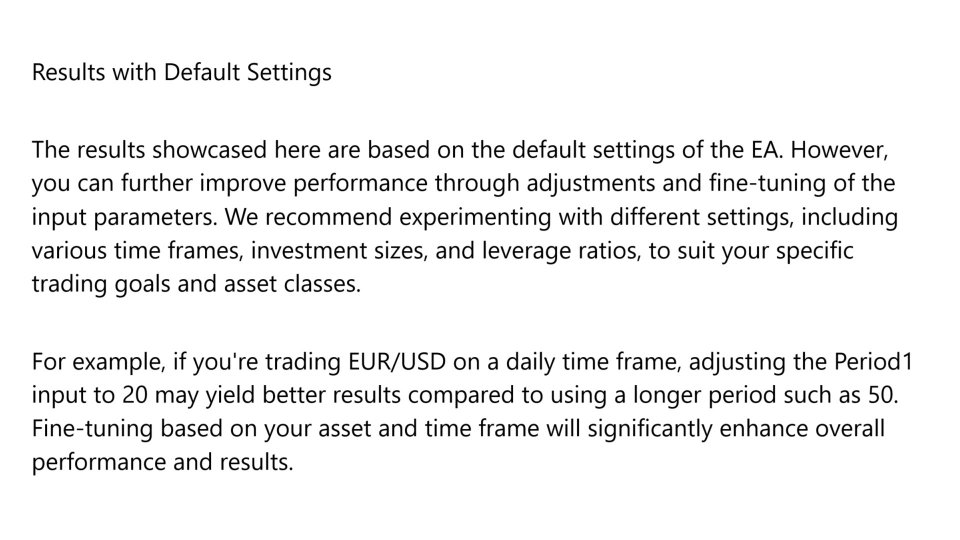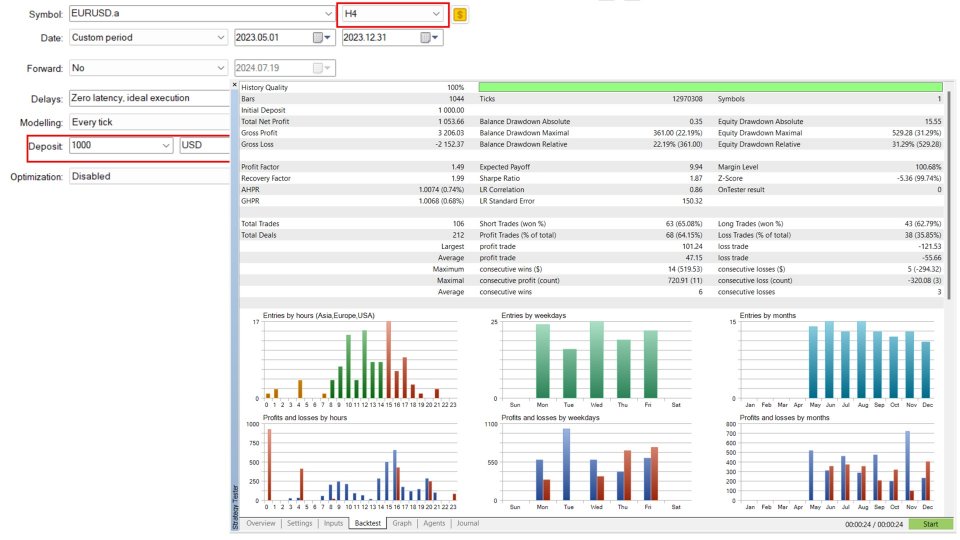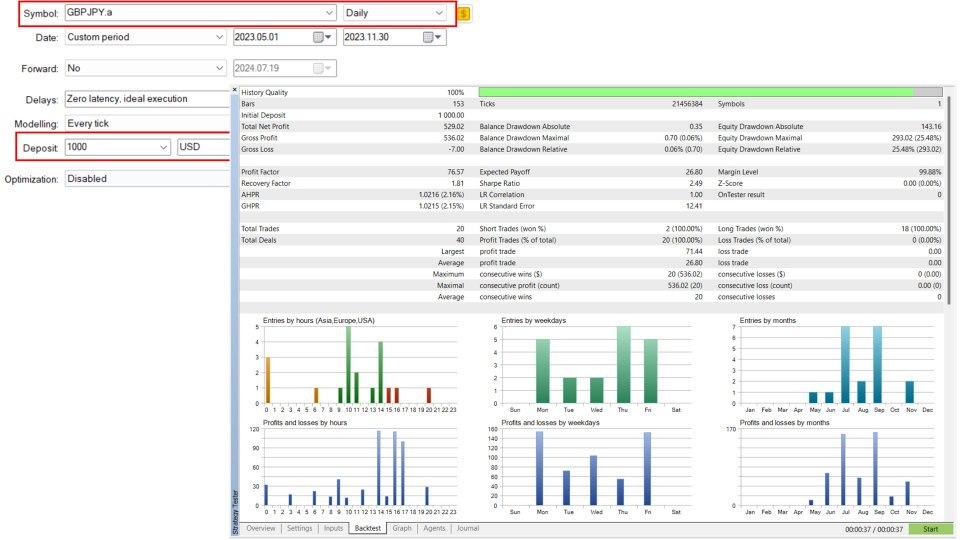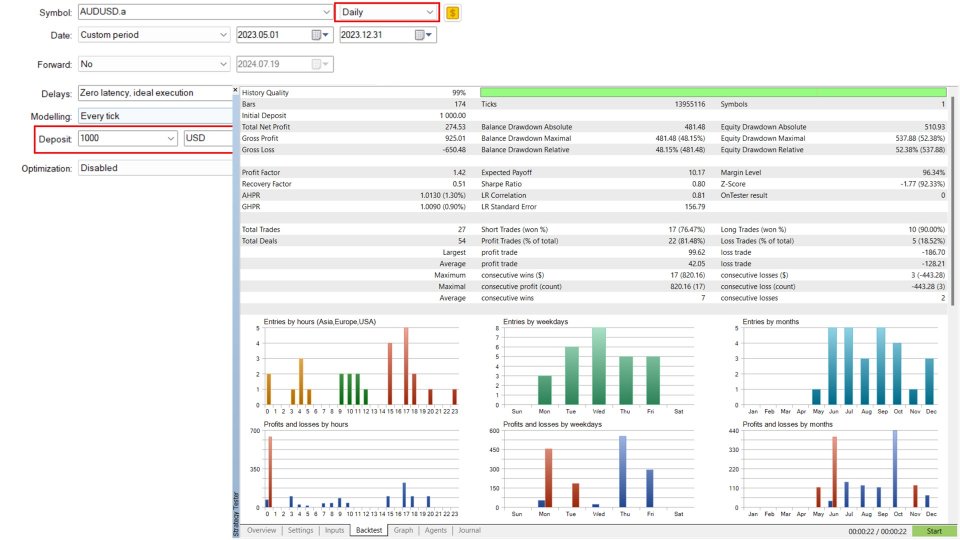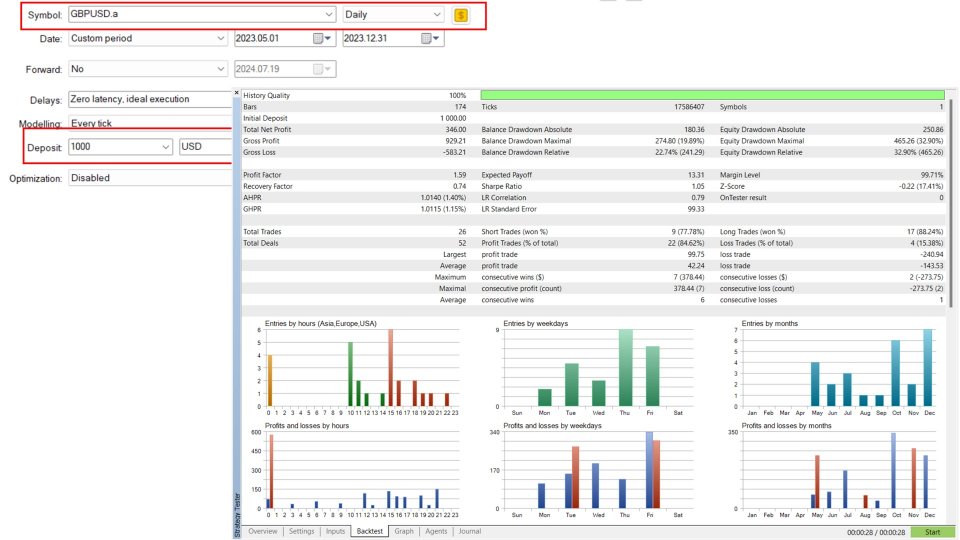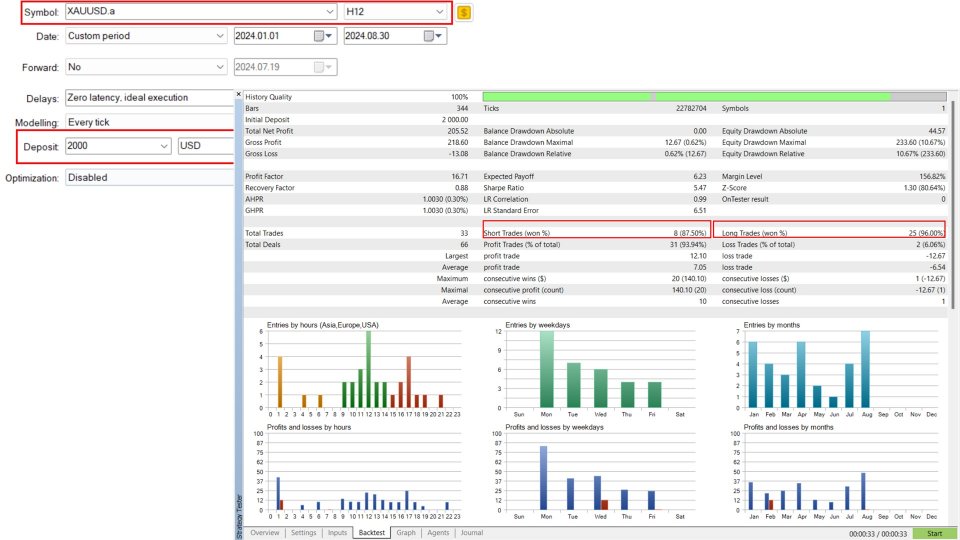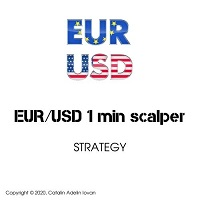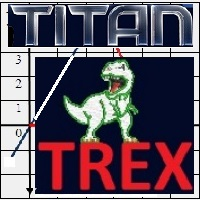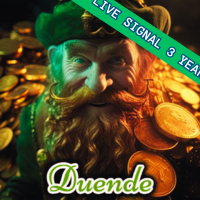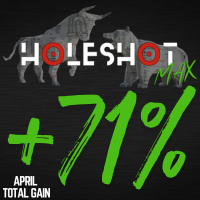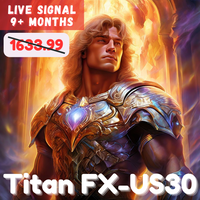EA Follow The Trend
- Experts
- Mohamed Mahmoud Sayed Kabesh Kabesh
- Version: 1.0
- Activations: 5
Introduction
The key to a good EA lies in maximizing profits while effectively managing risks. A strong EA typically achieves a win rate of around 65% to 70%*, which is considered solid for long-term profitability. *This success rate assumes consistent use of the recommended settings and criteria alongside proper order management.
The idea
This EA capitalizes on support and resistance levels, in combination with trend direction. It opens buy positions when the market is in an uptrend and hits a support level and sell positions when it is in a downtrend and touches a resistance level. The EA is designed to optimize profits while managing risk dynamically, ensuring the best possible outcomes for each trade.
- Take Profit (TP): The EA allows you to set a target TP, but also employs a Trailing Stop feature that locks in profits as the market moves in your favor.
- Stop Loss (SL): Rather than using a fixed SL, the EA dynamically calculates the risk for each order, closing positions to minimize potential losses based on market conditions.
Recommendations
· We recommend reviewing the shared settings for each asset and testing them rigorously in demo accounts before deploying them on live accounts.
· Always start with your own custom inputs and settings, and ensure thorough testing to align with your trading goals.
Inputs and definitions
· TP_Points: Specifies the exact number of pips at which to close an open position for profit.
· Trailing_Stop_Points: A trailing stop is a dynamic stop-loss level that follows your position as the market moves in your favor. For instance, if the Trailing Stop is set to 50 pips and the price moves 50 pips in your favor, the stop-loss will move to the break-even point, locking in your gains.
· Steps_Points: Specifies the minimum distance in pips that the stop-loss should move to avoid excessive modifications on every market tick.
· BreakEven_Points: This feature ensures that the trailing stop-loss only starts to move after the market price has surpassed a certain number of pips beyond the break-even point.
· Period1: This input sets the period for the Exponential Moving Average (EMA), which gives more weight to recent prices to better reflect current market conditions.
· Bar: This input defines the number of candlesticks to be considered for calculating support and resistance levels. Candlestick formations near support or resistance can provide valuable insights into potential reversals.
· TradeSize: Defines the lot size for trades. In Forex trading, a "lot" represents a standardized unit of the currency being traded.
Disclosures and Risk Warning
Before trading, it's essential to assess your investment goals, experience, and risk tolerance. Do not risk money you cannot afford to lose.
- CFD Risk: Contracts for Difference (CFDs) are complex instruments and carry a high risk of losing money rapidly due to leverage.
- Past Performance: Historical data and price patterns do not guarantee future results. Always be cautious when relying on past performance for future trades.
- Liability: The creator of this EA is not responsible for any results or financial outcomes resulting from its use. Users should employ their discretion and acknowledge the associated risks.
All suggestions/feedback are appreciated
- MQL5 IM

